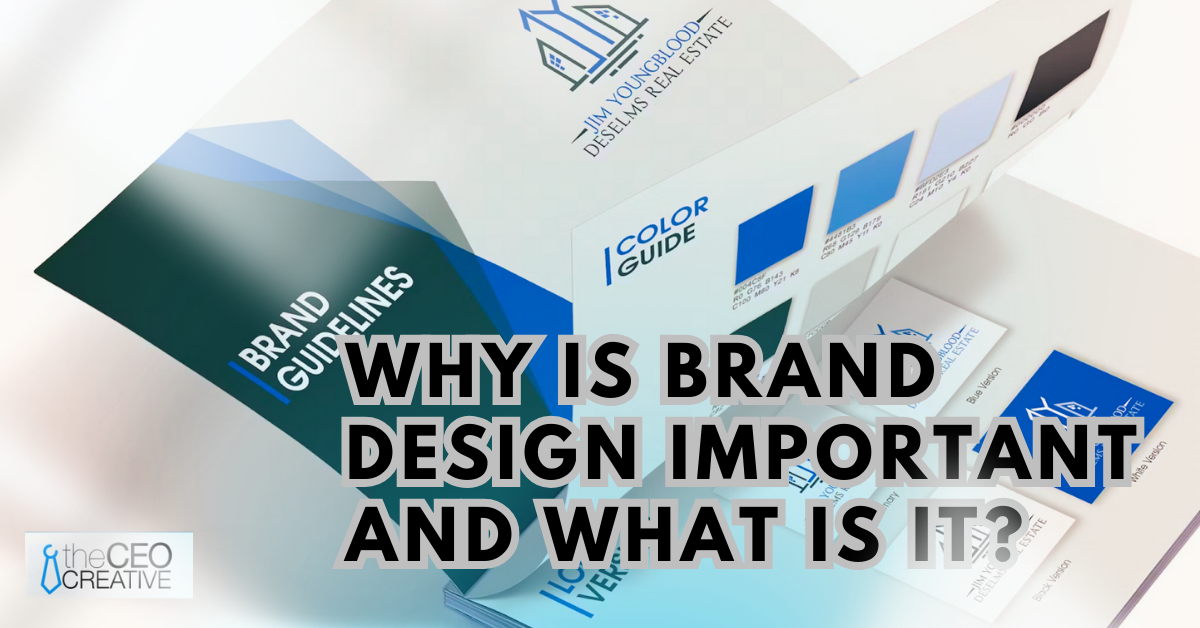| Summary:
A strong brand identity is key to standing out in a crowded marketplace. From McDonald’s iconic arches to Coca-Cola’s emotional connection, learn how effective brand design can boost recognition, build trust, and drive sales. Dive into essential design elements and real-life case studies that will inspire you to create a lasting, powerful brand! |
Did you know that 50% of consumers are more likely to buy from brands they recognize?
Yet, many businesses overlook one of the most powerful tools for success: brand design.
Without a strong brand design, your business risks blending in with the competition. In a world where consumers are constantly bombarded with choices, failing to stand out can be your biggest disadvantage.
Think about it: A poorly designed logo or inconsistent messaging can:
- Create confusion
- Erode trust
- Leave your brand struggling to attract and retain customers.
Worse, it can send the message that you’re unreliable. In fact, consistency in brand design can increase revenue by up to 33%.
So, why are so many entrepreneurs still underestimating its importance?
Here, we’ll break down what brand design really is, what it constitutes, and the importance of brand design.
Definition and Basics of Brand Design
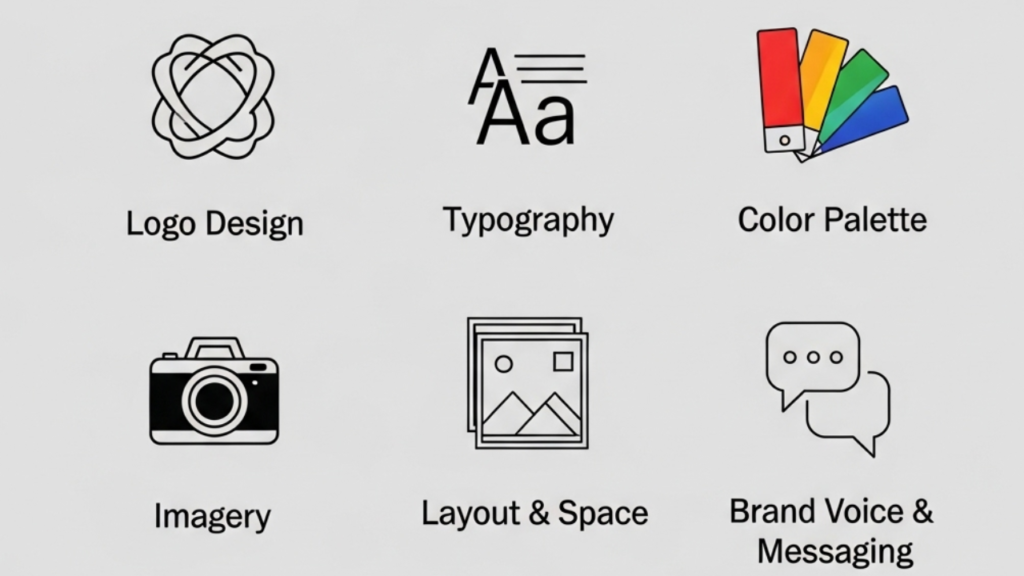
Brand design is the process of crafting a brand’s visual identity through a unified system of design elements such as:
- Logo Design
- Typography
- Color Palette
- Imagery
- Layout & Space
- Brand Voice and Messaging
A brand’s visual identity reflects its positioning and personality. The most effective brand design is informed by research and guided by strategy.
What Constitutes a Brand Design?
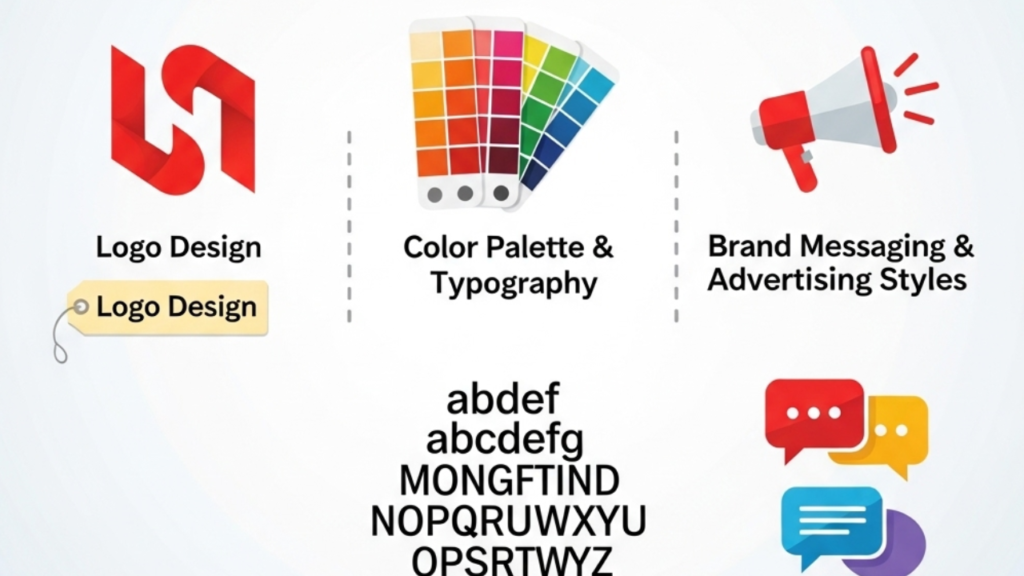
Brand design creates a unique visual identity that helps people recognize and connect with a brand. It is a part of graphic design that focuses on how a brand presents itself, using logos, fonts, colors, and other design elements both offline and online. Here are three of the major pillars of brand design:
1. Logo Design
It is the primary visual symbol that represents the brand. A well-designed logo should be memorable, unique, and adaptable for various applications.
2. Color Palette and Typography
In addition to the logo, other visual elements such as color palette and typography also create a complete image of your brand. A carefully chosen set of colors that evokes specific emotions and aligns with the brand’s personality and messaging. While right selection and arrangement of fonts help convey the brand’s personality and ensure readability across all materials.
For example, professional companies often prefer neutral colors and simple fonts, while creative industries may prefer bright colors and quirky fonts.
3. Brand Messaging and Advertising Styles
Brand messaging and advertising style are crucial for connecting with your audience. A strong brand message effectively conveys the brand’s unique value proposition, key selling points, and tangible benefits. This helps to connect with customers and influence their buying decisions.
The advertising style determines how this message is shared—whether through traditional or digital means, formal or casual—shaping the public’s perception of your brand.
Importance and Role of Brand Design in Business
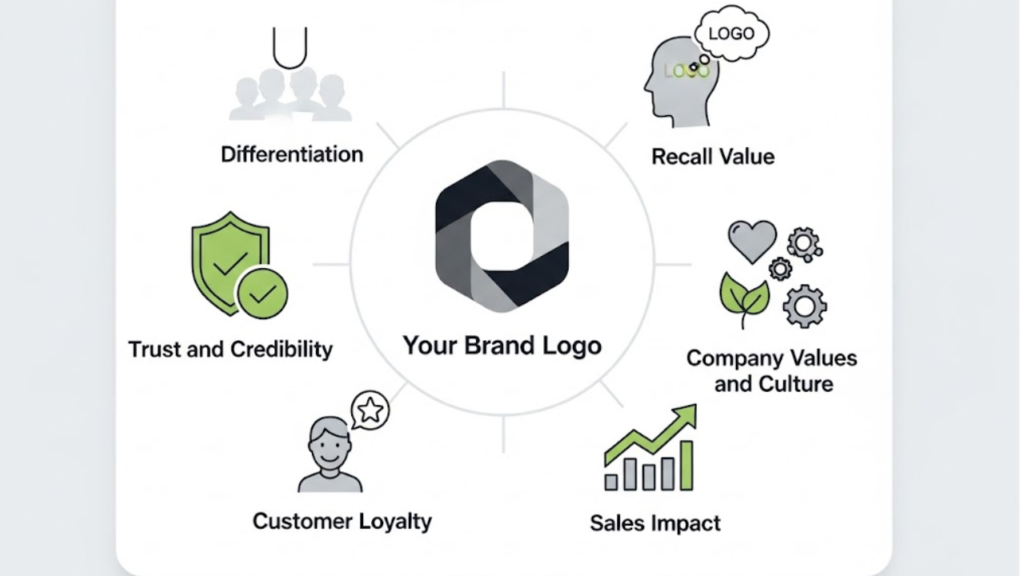
Brand design helps in building trust and credibility with your customers. A well-designed brand shows professionalism and reliability. This trust can lead to customer loyalty, making your business more successful over time.
Let’s know why brand design is important:
1. Helps Differentiate Your Business
A distinctive brand design differentiates your business by conveying your core values and mission. Every element of your design, from logos to color scheme to typography, speaks volumes about your business and helps create a unique identity. It:
- Bring a distinct personality to your business with design elements like color and typography, creating a recognizable character for your brand.
- Communicates your brand message effectively.
- Builds credibility and positions you as a leader in your industry.
2. Strengthens Recall Value Among Customers
A well-thought-out brand design doesn’t just attract the eyes; it’s etched in people’s minds. Consistent use of a distinct design across all platforms enhances brand recognition, creating a lasting impression. This heightened visibility increases recall value, boosting your chances of customers choosing you over competitors. It:
- Aids in customer recall during the purchase decision.
- Spurs decision-making in favor of your brand, influenced by familiarity.
- Paves the way for brand loyalty.
3. Building Trust and Credibility
Trustworthy brand design is what separates successful businesses from also-rans. A well-designed brand that maintains consistency promotes credibility. Cultivating trust leads to customer loyalty, which in turn leads to repeat business and referral traffic. A professional-looking, well-maintained brand design signals to consumers that you are serious about your product or service.
4. Reflecting Company Values and Culture
A strong brand design reflects your company’s values and culture. It:
- Convey messages about your commitment to quality, innovation, customer service, or sustainability.
- Allows you to showcase your unique company culture, making a personal connection with your audience.
5. Enhancing Customer Perceptions and Loyalty
Brand design plays a critical role in shaping customer perceptions and fostering loyalty. A well-executed, consistent design builds trust, communicates professionalism, and establishes reliability, which makes customers feel secure and valued.
6. Impact on Sales and Market Position
Strong brand design directly influences sales and market positioning. By communicating your business’s values clearly, it creates a unique identity that sets you apart in the market.
It:
- Enhances perceived value of your product or service to help you to justify premium pricing.
- Drives higher sales by directly appealing to your target audience.
- Carve out a niche in a competitive market.
How To Create a Winning Brand Design for Your Business
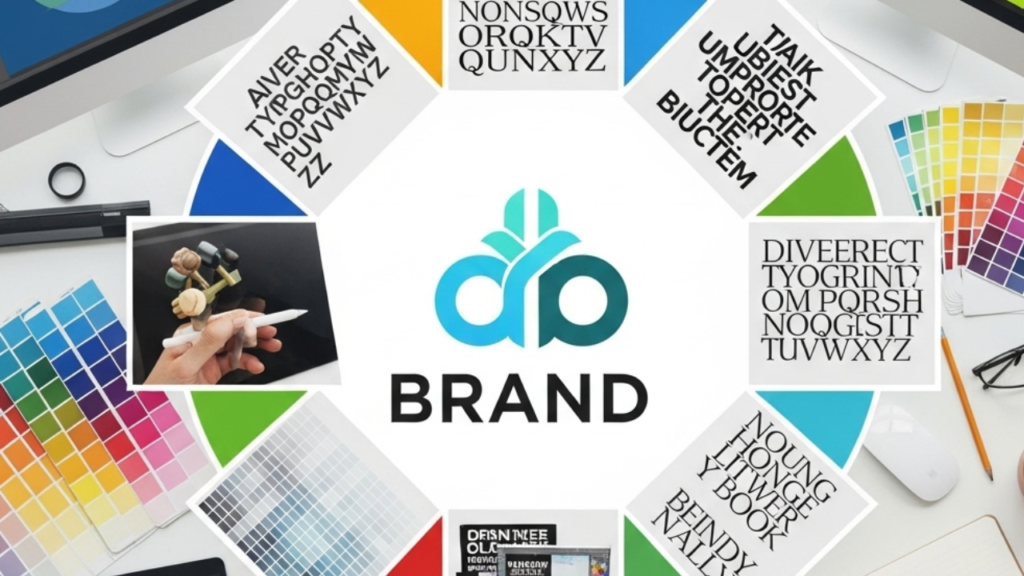
1. Understand Your Market and Customers
To create effective brand design, understand your market and potential customers. Analyze their demographics, preferences, and behaviors. For instance, a tech-savvy youth audience might appreciate a sleek, modern design, while an older demographic might prefer something more traditional and straightforward. Remember, your brand design should mirror what your customer’s value and desire.
- Identify what speaks to your customers
- Understand the psychographics & demographics
- Use customer insights to guide the design process
2. Align with Your Business Strategy
Your brand design must align with your business strategy. For example, if sustainability is your core mission, incorporate green colors and eco-friendly imagery into your design.
- Reflect your values and mission into the design.
- Ensure consistency in the design to match your brand’s character.
3. Consistency in Branding Efforts
Consistency is important in brand design. Whether it is your website, social media, packaging, or advertising—everything should be uniform.
- Uniformity in font, color, and imagery across platforms ensures that customers are interacting with the same brand everywhere.
- Consistent messaging and tone reinforce your brand’s personality, creating familiarity and resonance.
4. Work with Design Professionals
Don’t underestimate the power of professional assistance. Skilled designers offer unique perspective, helping your brand to capture attention and evoke desirable feelings. They know how to marry aesthetics with function, creating a brand design that’s both beautiful and effective.
- Employ professionals for unique and compelling designs
- Leverage their expertise for a functional & aesthetic outcome
By working with design professionals, you’re taking the first step towards creating a brand identity that resonates with your audience and supports your business goals.
Case Studies That Demonstrate the Success of Strong Brand Designs

Strong brand design goes beyond a logo.
It:
- Shapes perception
- Fuels trust
- Differentiates a company in a crowded marketplace
Here are examples of companies that leveraged design and strategy to become global icons:
1. McDonald’s

McDonald’s began as a single drive-in restaurant in California (1940s). They expanded quickly by standardizing service and quality.
Branding Strategy
- The “Golden Arches” symbol, a simple yet memorable design, has become synonymous with fast service and consistency globally.
- The consistent use of red and yellow signals speed, optimism, and appetite.
- Slogans like “I’m Lovin’ It” reinforce brand personality and customer connection.
Outcomes
- Worldwide recognition in over 100 locations and tens of thousands of locations.
- The arches are among the most recognized logos worldwide, even without the company name.
- Brand value supported expansion into new markets and product lines.
2. Coca-Cola
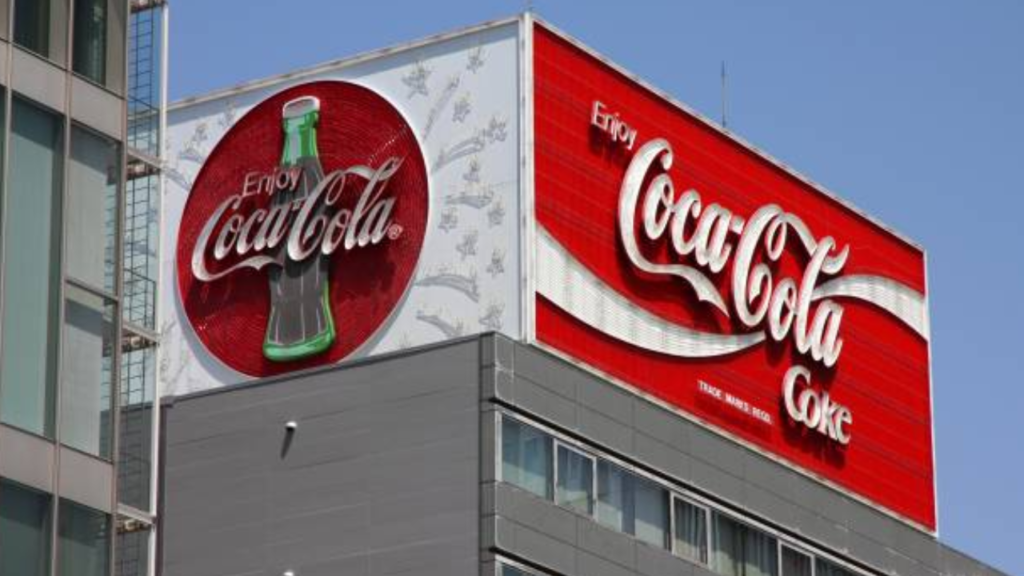
Coca-Cola was invented in a small pharmacy in Atlanta (1886). They were struggling with limited reach and little recognition.
Branding Strategy
- Distinctive Spencerian script logo enhances memorability.
- Consistent red and white color palette across all packaging and advertising.
- Legendary contour bottle design sets the product apart, even in silhouette.
- Emotional marketing campaigns (“Open Happiness”) focus on community and joy.
Outcomes
- The logo and bottle shape are instantly identifiable across the globe.
- Coca-Cola is a leader in global soft drinks with over 1.9 billion servings sold each day across 200+ countries.
- The cohesive brand identity anchors every new product or campaign.
Conclusion
The brand design creates visibility and distinguishes your brand from others. It:
- Helps evoke emotions and build connections with customers.
- Communicates your brand’s story and underlines its core values.
- Contributes to the seamless user experience with consistency in visual elements.
The significance of brand design to a business can’t be underestimated. Its strategic application furnishes identity, fosters trust, and inculcates a superior brand perception.
Frequently Asked Questions (FAQs)
1. What are the 4 types of brand?
There are four types of branding: personal, corporate, product, and service.
2. What are the 4 types of logo for a brand?
A primary logo, secondary logo, submark, and favicon.
3. What does a brand design include?
Brand design includes the visual, verbal, and conceptual elements that define a company’s identity and how the audience perceives it.
4. Is brand design under graphic design?
Yes, brand design comes under graphic design.

